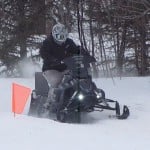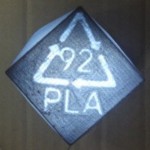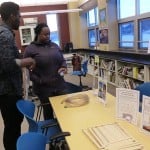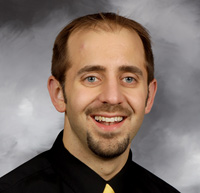The Chemical Engineering department presented a talk by Dr. James H. Comfort, General Manager, Cloud Services, IBM Cloud Division. The title was “Crafting a Career in Uncharted Waters: A Journey from Chemical Engineering to Cloud Computing and Back.” The presentation was in Fisher 135 at 5:00 p.m. Tuesday March 31st. The university was invited to attend.
 Michigan Tech celebrated World Water Day on March 23, 2015. Professor Peter Goodwin presented a lecture on “River Restoration and Flood Management”. Goodwin is the director of the Center for Ecohydraulics Research at the University of Idaho and also served as the science director for the California Delta Program. He is the DeVlieg Presidential Professor in Ecohydraulics and Professor of Civil Engineering at the University of Idaho.
Michigan Tech celebrated World Water Day on March 23, 2015. Professor Peter Goodwin presented a lecture on “River Restoration and Flood Management”. Goodwin is the director of the Center for Ecohydraulics Research at the University of Idaho and also served as the science director for the California Delta Program. He is the DeVlieg Presidential Professor in Ecohydraulics and Professor of Civil Engineering at the University of Idaho.
The Center for Water & Society World Water Day poster competition was held at the Great Lakes Research Center. Awards were made in two categories: Original Research (presentation of thesis or project research) and Coursework/Informational (presentation of coursework or literature-based research).
 College of Engineering Dean Wayne Pennington joins representatives of more than 120 other engineering schools and colleges at the White House today to celebrate a commitment to educate a new generation of engineers expressly equipped to tackle some of the most pressing issues facing society in the 21st century.
College of Engineering Dean Wayne Pennington joins representatives of more than 120 other engineering schools and colleges at the White House today to celebrate a commitment to educate a new generation of engineers expressly equipped to tackle some of the most pressing issues facing society in the 21st century.
In a letter of commitment presented to President Barack Obama yesterday, 122 US engineering schools pledged to each graduate a minimum of 20 students per year who have been specially prepared to lead the way in solving large-scale societal challenges such as engineering better medicines, making solar energy cost-competitive with coal, securing cyberspace and advancing personalized learning tools to deliver better education to more individuals.
 The 2015 Winter Baja was held Saturday, Feb. 21, near the Student Development Complex at Michigan Technological University.
The 2015 Winter Baja was held Saturday, Feb. 21, near the Student Development Complex at Michigan Technological University.
The University of Iowa car #48 came in first place, followed by Northern Michigan University car #40 at 2nd Place and Ferris State University car #76 at 3rd Place. Other standings are listed below showing the place and laps completed. In the dynamic event University of Michigan Car #1 came in first followed by University of Iowa Car # 68 at 2nd and University of Michigan Car #161 at 3rd.
The event was held during the National Engineers Week at Michigan Tech. This year there were 33 off-road vehicles from 18 universities. The event is an informal, but competitive Winter Baja race held on a motocross-style track made out of snow.
 The Keweenaw Research Center and the Department of Mechanical Engineering–Engineering Mechanics at Michigan Tech hosted the 2015 SAE Clean Snowmobile Challenge— from March 2-7, 2015 and have hosted it for the last 12 years. The mission of this challenge is to design a snowmobile that achieves reduced emissions and noise characteristics while keeping performance equal to or better than the performance of stock snowmobiles. Find out more at the 2015 SAE Clean Snowmobile Summary Report
The Keweenaw Research Center and the Department of Mechanical Engineering–Engineering Mechanics at Michigan Tech hosted the 2015 SAE Clean Snowmobile Challenge— from March 2-7, 2015 and have hosted it for the last 12 years. The mission of this challenge is to design a snowmobile that achieves reduced emissions and noise characteristics while keeping performance equal to or better than the performance of stock snowmobiles. Find out more at the 2015 SAE Clean Snowmobile Summary Report
 The 3-D printing revolution has changed the way we think about plastics. Everything from children’s toys to office supplies to high-value laboratory equipment can be printed. The potential savings of producing goods at the household- and lab-scale is remarkable, especially when producers use old prints and recycle them.
The 3-D printing revolution has changed the way we think about plastics. Everything from children’s toys to office supplies to high-value laboratory equipment can be printed. The potential savings of producing goods at the household- and lab-scale is remarkable, especially when producers use old prints and recycle them.
Read More
 by John Diebel, M-TRAC program director, Innovation and Industry Engagement
by John Diebel, M-TRAC program director, Innovation and Industry Engagement
Faculty and student inventors will have an opportunity to learn the secrets of commercializing technology at an all-day roundtable offered in the Advanced Technology Development Complex Large Conference Room starting at 9 a.m. on March 19. The M-TRAC program in Michigan—with support from the 21st Century Jobs Trust Fund and Michigan Strategic Fund—will be sponsoring the event.
 National Society of Black Engineers students from Michigan Tech are going to present science, technology and engineering talks in the Detroit area for middle- and highschool students at five different schools by day, and presenting three family engineering nights for elementary students at night. The spring break trip is supported by John Deere.
National Society of Black Engineers students from Michigan Tech are going to present science, technology and engineering talks in the Detroit area for middle- and highschool students at five different schools by day, and presenting three family engineering nights for elementary students at night. The spring break trip is supported by John Deere.
The Houghton Michigan Daily Mining Gazette had an article: “Doing good downstate: Six Tech students will spend break sharing with youngsters.


